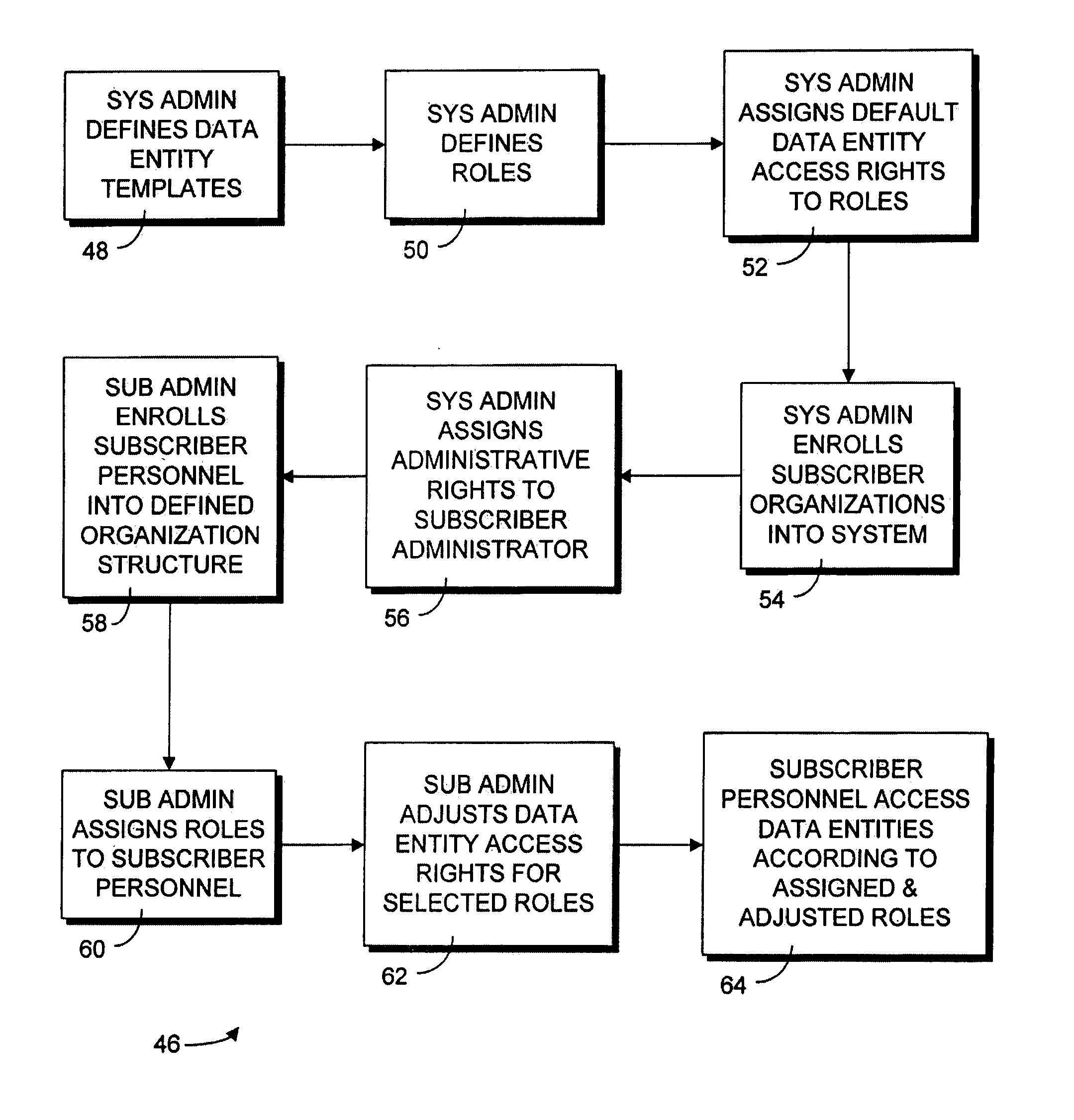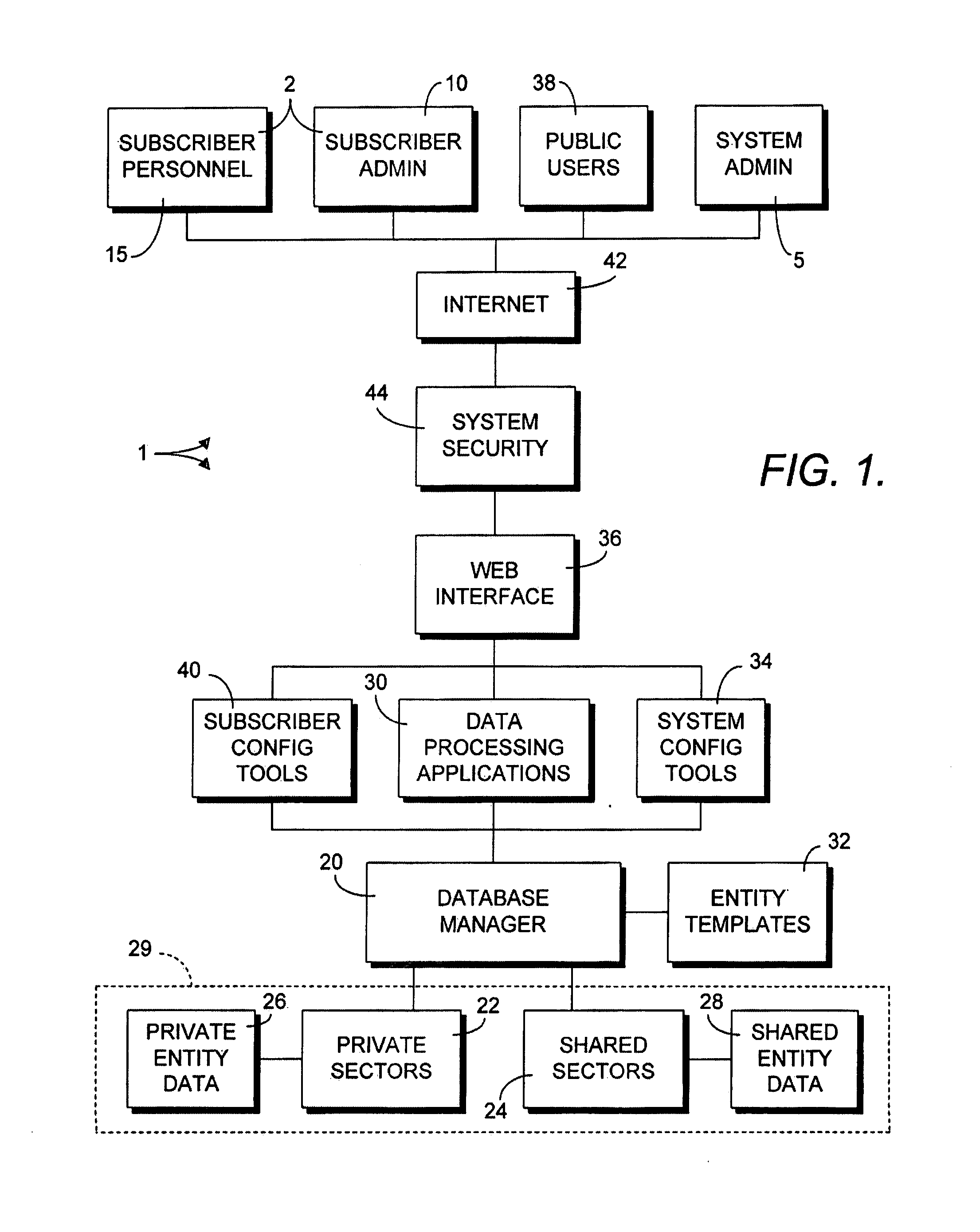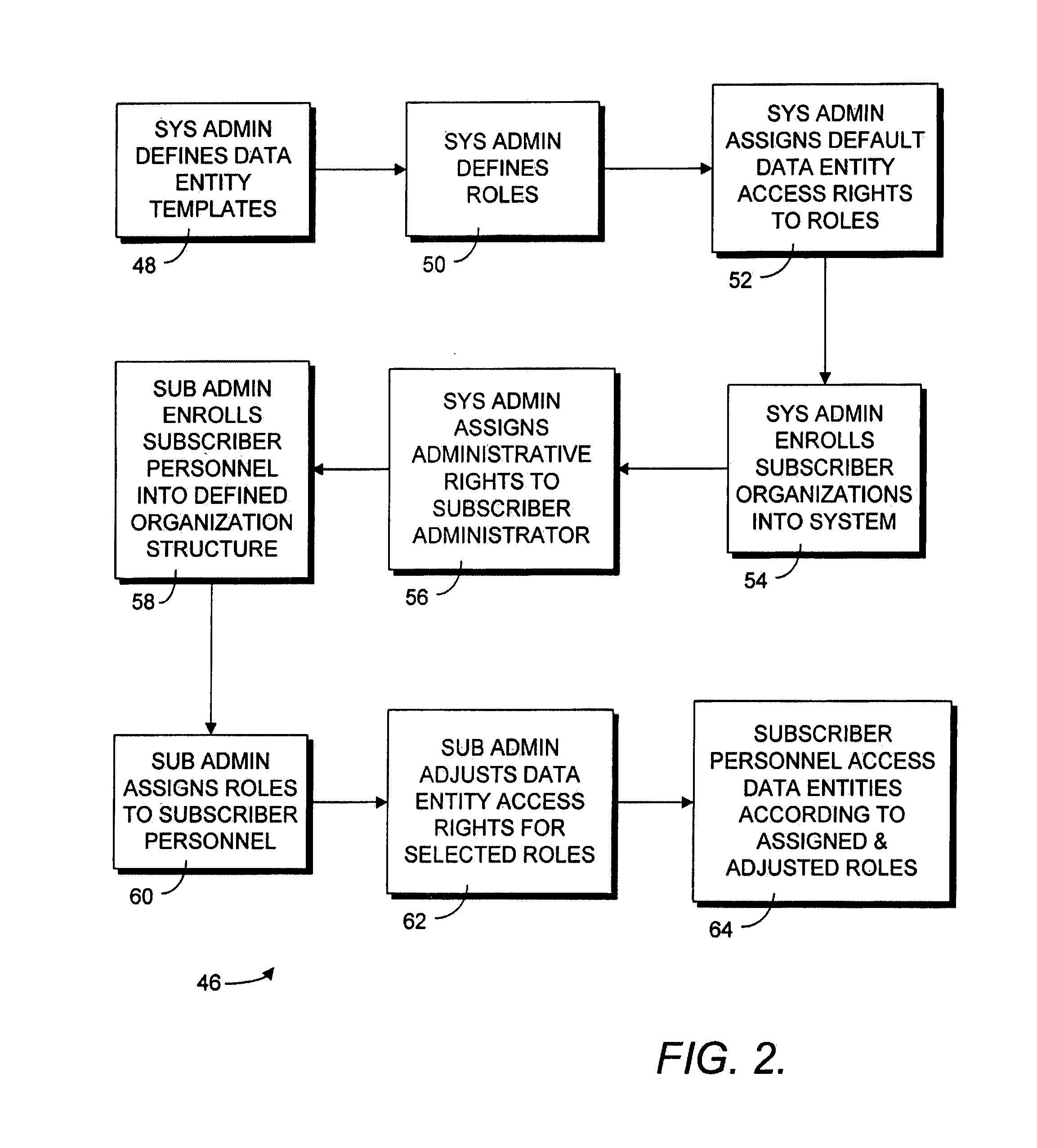Multi-organizational information management system
a multi-organizational, information management technology, applied in the field of information management, can solve the problems of affecting the efficiency of the organization, the difficulty of planning, managing and tracking thousands of projects, programs and events, and the loss of funding, so as to simplify the management of business rules, facilitate access, and improve the effect of efficiency
- Summary
- Abstract
- Description
- Claims
- Application Information
AI Technical Summary
Benefits of technology
Problems solved by technology
Method used
Image
Examples
Embodiment Construction
[0040] As required, detailed embodiments of the present invention are disclosed herein; however, it is to be understood that the disclosed embodiments are merely exemplary of the invention, which may be embodied in various forms. Therefore, specific structural and functional details disclosed herein are not to be interpreted as limiting, but merely as a basis for the claims and as a representative basis for teaching one skilled in the art to variously employ the present invention in virtually any appropriately detailed structure.
[0041] Referring to the drawings in more detail, the present invention comprises a web enabled computer system1 adapted to facilitate information management for projects involving multiple, unrelated subscriber organizations throughout the project lifecycle. The computer system 1 is designed to collect data regarding projects from multiple organizations, subscribing organizations or subscribers 2, participating in the project and subscribing to the computer...
PUM
 Login to View More
Login to View More Abstract
Description
Claims
Application Information
 Login to View More
Login to View More - R&D
- Intellectual Property
- Life Sciences
- Materials
- Tech Scout
- Unparalleled Data Quality
- Higher Quality Content
- 60% Fewer Hallucinations
Browse by: Latest US Patents, China's latest patents, Technical Efficacy Thesaurus, Application Domain, Technology Topic, Popular Technical Reports.
© 2025 PatSnap. All rights reserved.Legal|Privacy policy|Modern Slavery Act Transparency Statement|Sitemap|About US| Contact US: help@patsnap.com



